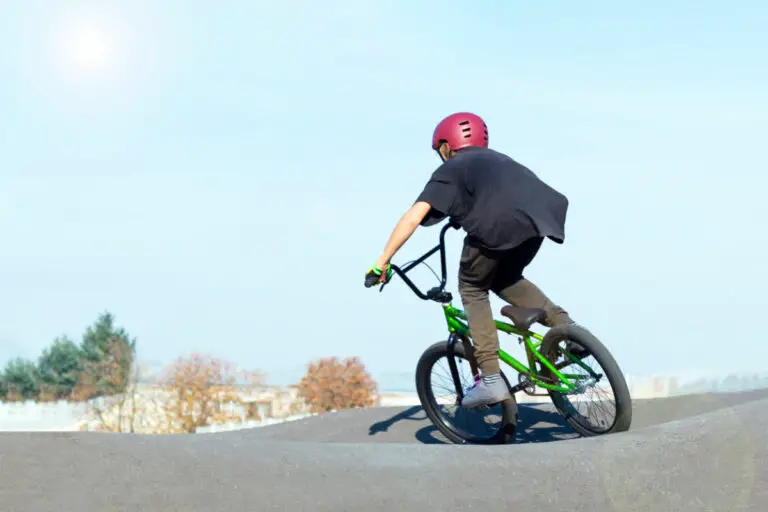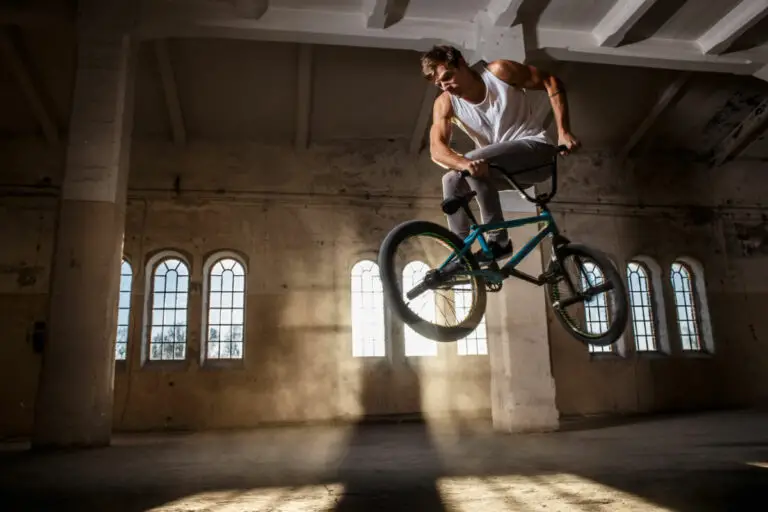Are BMX Bikes Good For Trails – The Pros & Cons
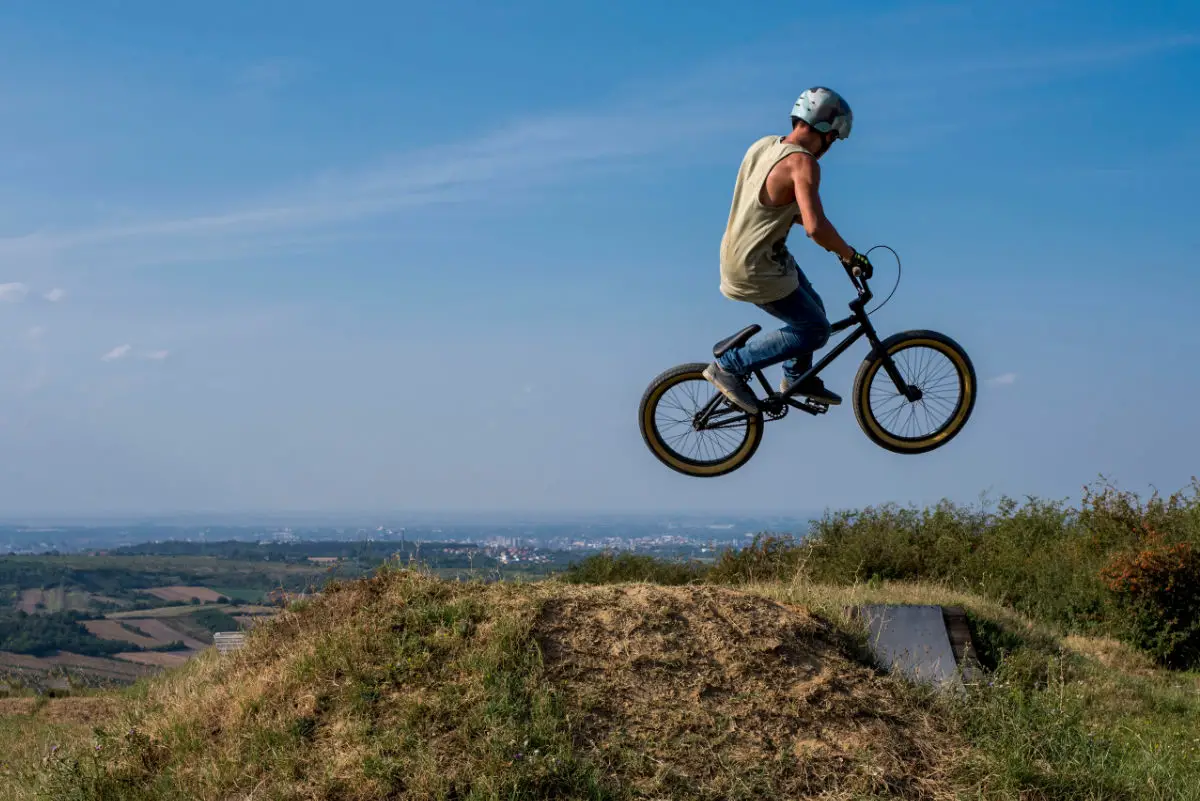
BMX bikes, also known as Bicycle Moto Cross bikes, are designed for racing on dirt tracks. They have strong frames, 20-inch wheels, and knobby tires that provide good traction on dirt.
On the other hand, trails are off-road paths used for outdoor activities like biking, hiking, and horseback riding. The terrain of trails can range from smooth and well-maintained to rocky and technical.
As thrill-seekers and adventurers, you may be wondering if BMX bikes are suitable for trails.
In this ultimate guide, we will examine the history of BMX bikes and trails, the crucial features of a good trail bike, the advantages and disadvantages of using a BMX bike on trails, and some tips for those daring enough to ride BMX bikes on trails.
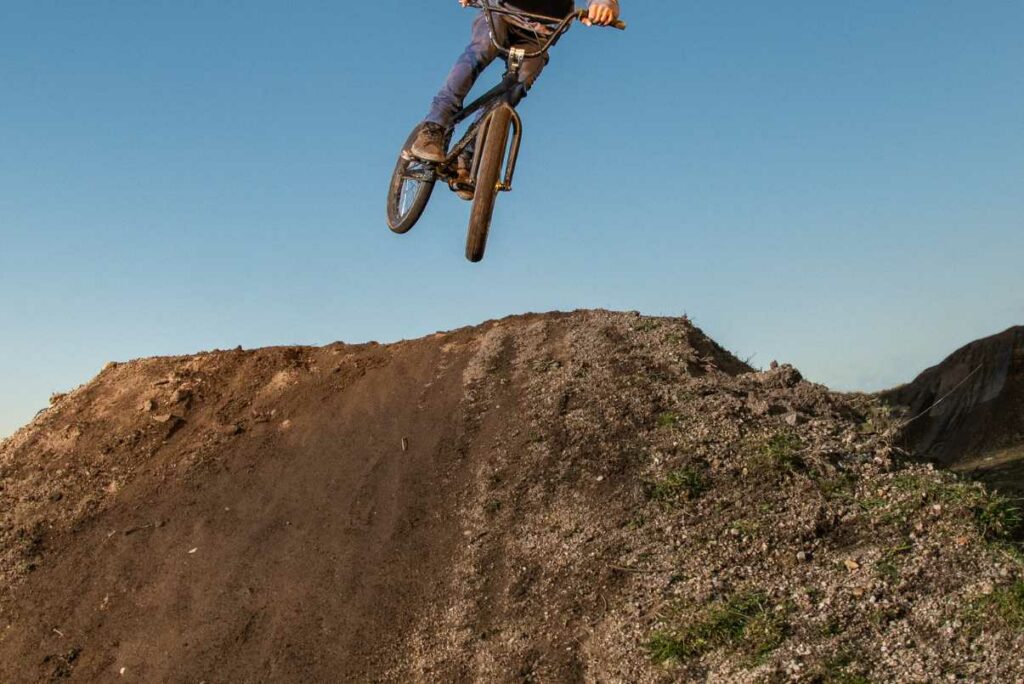
The Evolution of BMX Bikes: From Racing to Thrilling
BMX bikes have a long and daring history that began in the 1960s when kids in Southern California raced modified bikes on dirt tracks.
As BMX racing gained popularity, bike manufacturers began producing bikes specifically designed for the sport.
These bikes had strong and lightweight frames, 20-inch wheels, and knobby tires that provided good traction on dirt.
In the 1980s, BMX bikes became more popular as a recreational activity, and bike manufacturers started producing models that were suitable for off-road riding.
This led to the development of trails specifically designed for BMX riding, which often included jumps, berms, and other obstacles that were popular with BMX riders.
These trails offered a new level of excitement and thrill for BMX enthusiasts.
Essential Features for a Trail Bike: Don’t Get Caught Unprepared
As a thriller seeker, you need a reliable and well-equipped bike to conquer the trails. Here are some essential features to look for in a trail bike:
- Suspension: A bike with front and/or rear suspension can absorb the impact of rough terrain, making for a more comfortable and controlled ride. Don’t let rough trails bring you down – get a bike with suspension to keep you on the move.
- Tires: The right tires can make a big difference on the trails. Look for tires with knobby treads that provide good traction on dirt and loose surfaces. You don’t want to get stuck in the mud or lose control on a rocky path. Choose the right tires to keep you rolling.
- Brakes: Good brakes are essential for safely navigating trails. Look for hydraulic disc brakes, which offer strong and reliable stopping power. You never know when you’ll need to make a quick stop, so make sure your brakes are up to the task.
- Frame and geometry: The frame and geometry of a bike can affect its handling and stability on the trails. A bike with a longer wheelbase and a slack head angle (the angle of the head tube relative to the ground) may be more stable on rough terrain, while a shorter wheelbase and a steeper head angle may be more agile. Choose the right frame and geometry for your desired level of thrill and control.
Pros and Cons of Riding a BMX Bike on Trails: The Good, the Bad, and the Thrilling
So, are BMX bikes suitable for trails? Here are some pros and cons to consider:
Pros:
- They’re strong and durable: One of the best things about BMX bikes is that they’re built to withstand the rigors of racing. That means they’re usually pretty tough and can handle rough terrain pretty well. If you’re planning on tackling some rough trails, this might be a good thing to consider.
- They’re lightweight: Another advantage of BMX bikes is that they’re usually pretty lightweight. This can make them easier to maneuver and control on the trails, especially for riders who are new to off-road riding or who don’t have a lot of upper body strength.
- They’re affordable: BMX bikes are generally more affordable than mountain bikes, which can be a plus if you’re on a budget. Don’t let a tight budget hold you back from your next trail adventure.
Cons:
- Limited suspension: A lot of BMX bikes don’t have any suspension, which can make them less comfortable to ride on rough trails. This lack of suspension can also make it harder to control the bike on rough terrain, as you’ll be more likely to get bounced around. If comfort is a top priority, you might want to consider a bike with some suspension.
- Small wheels: BMX bikes have 20-inch wheels, which are smaller than the wheels on most mountain bikes. This can make it harder to roll over rough terrain, as the smaller wheels might get caught on rocks and other obstacles. If you’re planning on tackling really technical trails, you might want to consider a bike with bigger wheels for improved rollover ability.
- Limited gears: A lot of BMX bikes only have one gear, which can make it harder to tackle steep inclines on the trails. This lack of gears can also make it harder to maintain a consistent cadence
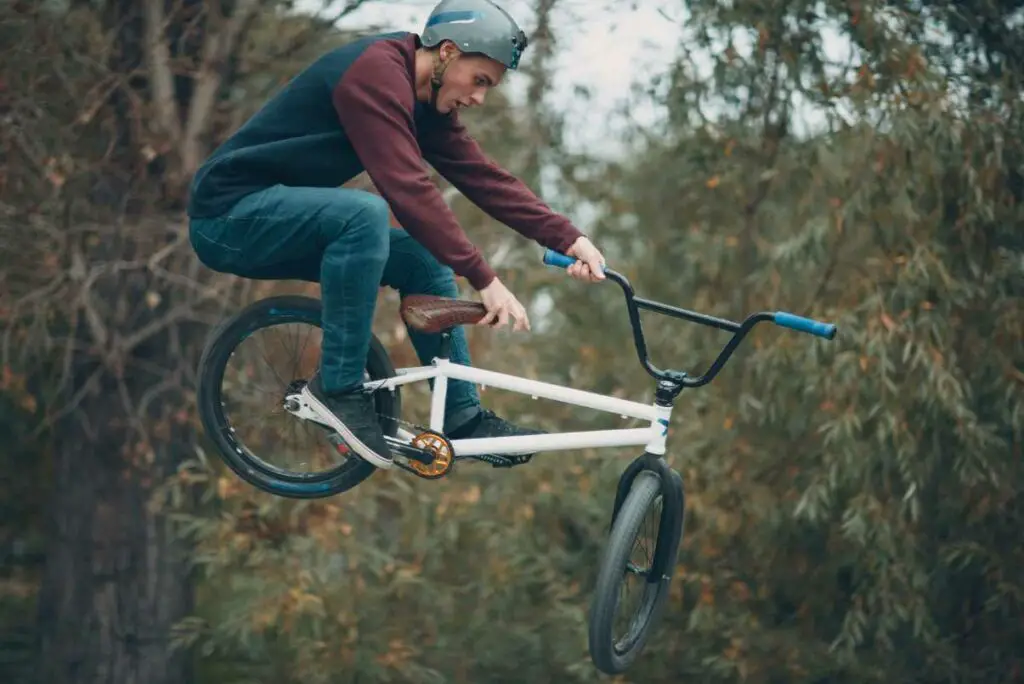
Tips for Riding BMX Bikes on Trails: Stay Safe and Conquer the Trail
If you’re determined to ride a BMX bike on the trails, here are a few tips to keep in mind:
- Adjust your riding style: Since BMX bikes do not have as much suspension as mountain bikes, you’ll need to adjust your riding style to account for the lack of cushioning. This may mean standing up and using your body to absorb impacts, rather than relying on the bike’s suspension.
- Wear protective gear: Make sure to wear protective gear, such as a helmet, knee pads, and elbow pads, to help protect yourself in case of a fall. Thrilling adventures can be dangerous, so don’t take any unnecessary risks.
- Keep your tires properly inflated: Proper tire inflation is crucial for good traction and control on the trails. Check your tire pressure regularly and adjust as needed to ensure that you have the right amount of pressure for the terrain you’ll be riding on.
- Practice good bike maintenance: Regular maintenance is essential to keep your BMX bike in good condition on the trails. This includes cleaning and lubricating the chain, checking the brakes and tires, and making any necessary repairs or adjustments. A well-maintained bike is crucial for a smooth and thrilling ride.
Conclusion: Is a BMX Bike the Right Choice for Your Next Thrilling Adventure?
BMX bikes can be a good choice for trails, especially for riders who are looking for a lightweight and affordable option.
These bikes are strong and durable, and their small size can make them easier to maneuver on the trails.
However, their lack of suspension and small wheels can make them less comfortable and less efficient on rough terrain, so they may not be the best choice for everyone.
Ultimately, the decision to ride a BMX bike on trails comes down to personal preference and the specific needs of the rider.
If you’re looking for a bike that is strong, lightweight, and affordable, and you’re comfortable with the tradeoffs in terms of suspension and gear range, a BMX bike might be a good choice for your next adventure on the trails.
However, if you’re looking for a bike that is more comfortable and efficient on rough terrain, a mountain bike might be a better fit.
So, choose wisely and let your passion guide you on your next thrilling ride.

